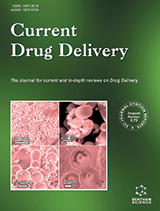Abstract
Identification of the most relevant epitopes is the initial challenge of peptide-based vaccine design. Chimeric conserved epitopes of the Group A Streptococcus (GAS) M-protein were used in the development of an anti-GAS vaccine candidate. Previously, these epitopes have incorporated a GCN4 peptide from yeast to maintain their native helical structure. Here, we designed a new peptide epitope based on the minimal B-cell epitope from GAS M-protein. This new epitope was able to adopt the desired helical conformation without the need for the foreign GCN4 flanking sequence. The selected epitope induced significant immune responses upon administration with external adjuvant, and when incorporated into the Lipid Core Peptide (LCP) system. Moreover, the antibodies produced against this epitope were able to recognize the native p145 sequence from M-protein.
Keywords: lipid core peptide, adjuvant, Group A streptococcus, B-cell epitope, self-assembly, conformational epitope, peptide vaccine
Current Drug Delivery
Title:M-Protein-derived Conformational Peptide Epitope Vaccine Candidate against Group A Streptococcus
Volume: 10 Issue: 1
Author(s): Mariusz Skwarczynski, Khairul A. Kamaruzaman, Saranya Srinivasan, Mehfuz Zaman, I-Chun Lin, Michael R. Batzloff, Michael F. Good and Istvan Toth
Affiliation:
Keywords: lipid core peptide, adjuvant, Group A streptococcus, B-cell epitope, self-assembly, conformational epitope, peptide vaccine
Abstract: Identification of the most relevant epitopes is the initial challenge of peptide-based vaccine design. Chimeric conserved epitopes of the Group A Streptococcus (GAS) M-protein were used in the development of an anti-GAS vaccine candidate. Previously, these epitopes have incorporated a GCN4 peptide from yeast to maintain their native helical structure. Here, we designed a new peptide epitope based on the minimal B-cell epitope from GAS M-protein. This new epitope was able to adopt the desired helical conformation without the need for the foreign GCN4 flanking sequence. The selected epitope induced significant immune responses upon administration with external adjuvant, and when incorporated into the Lipid Core Peptide (LCP) system. Moreover, the antibodies produced against this epitope were able to recognize the native p145 sequence from M-protein.
Export Options
About this article
Cite this article as:
Skwarczynski Mariusz, A. Kamaruzaman Khairul, Srinivasan Saranya, Zaman Mehfuz, Lin I-Chun, R. Batzloff Michael, F. Good Michael and Toth Istvan, M-Protein-derived Conformational Peptide Epitope Vaccine Candidate against Group A Streptococcus, Current Drug Delivery 2013; 10 (1) . https://dx.doi.org/10.2174/1567201811310010007
| DOI https://dx.doi.org/10.2174/1567201811310010007 |
Print ISSN 1567-2018 |
| Publisher Name Bentham Science Publisher |
Online ISSN 1875-5704 |
 35
35
- Author Guidelines
- Bentham Author Support Services (BASS)
- Graphical Abstracts
- Fabricating and Stating False Information
- Research Misconduct
- Post Publication Discussions and Corrections
- Publishing Ethics and Rectitude
- Increase Visibility of Your Article
- Archiving Policies
- Peer Review Workflow
- Order Your Article Before Print
- Promote Your Article
- Manuscript Transfer Facility
- Editorial Policies
- Allegations from Whistleblowers
Related Articles
-
New Approaches to Atherosclerotic Cardiovascular Disease. The Potentialities of Torcetrapib
Recent Patents on Cardiovascular Drug Discovery Genome Wide Analysis of Chlamydia pneumoniae for Candidate Vaccine Development
Current Computer-Aided Drug Design Quinoxalinone as a Privileged Platform in Drug Development
Mini-Reviews in Medicinal Chemistry Progress and Prospects of Stem Cells in Treatment of Drug Resistant Tuberculosis
Current Respiratory Medicine Reviews Natural and Synthetic Agents Targeting Inflammation and Angiogenesis for Chemoprevention of Prostate Cancer
Current Cancer Drug Targets The Role of Anaphylatoxins C3a and C5a in Regulating Innate and Adaptive Immune Responses
Inflammation & Allergy - Drug Targets (Discontinued) Lifestyle Modification with Physical Activity Promotion on Leptin Resistance and Quality of Life in Metabolic Syndrome - A Systematic Review with Meta-Analysis
Current Diabetes Reviews Targeted Cancer Therapy: The Next Generation of Cancer Treatment
Current Drug Discovery Technologies Frequency Domain Mapping of Atrial Fibrillation - Methodology, Experimental Data and Clinical Implications
Current Cardiology Reviews Atheromatosis Extent in Coronary Artery Disease is not Correlated with Apolipoprotein-E Polymorphism and its Plasma Levels, but Associated with Cognitive Decline
Current Alzheimer Research Xenosensors CAR and PXR at Work: Impact on Statin Metabolism
Current Drug Metabolism The Mechanisms Behind the Biological Activity of Flavonoids
Current Medicinal Chemistry Angiotensin II and Abdominal Aortic Aneurysms: An update
Current Pharmaceutical Design Myocardial Structure and Matrix Metalloproteinases
Current Topics in Medicinal Chemistry The Role of Statins for the Primary and Secondary Prevention of Coronary Heart Disease in Women
Current Pharmaceutical Design Transmucosal Delivery of Linagliptin for the Treatment of Type- 2 Diabetes Mellitus by Ultra-Thin Nanofibers
Current Drug Delivery Your Father and Grandfather’s Atrial Fibrillation: A Review of the Genetics of the Most Common Pathologic Cardiac Dysrhythmia
Current Genomics Chronic Migraineurs Form Carboxyhemefibrinogen and Iron-Bound Fibrinogen
CNS & Neurological Disorders - Drug Targets The Interaction of Dietary Fibres with the Colon
Current Nutrition & Food Science Non-Vitamin K Oral Anticoagulant Drugs for Stroke Prevention in Patients with Atrial Fibrillation and Chronic Kidney Disease
Current Medicinal Chemistry


























